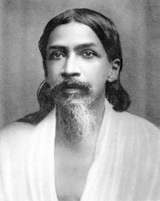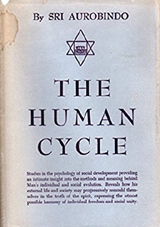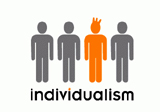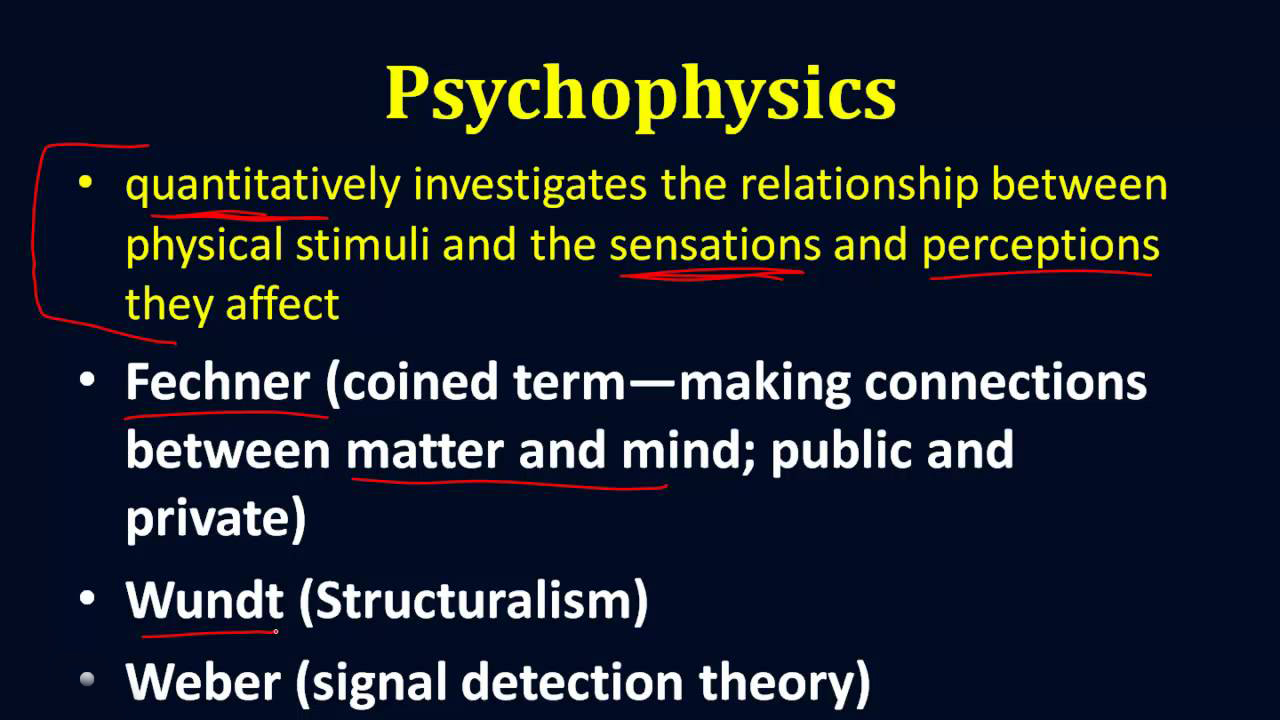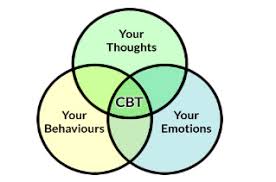Mental health
American psychology’s psychobiological perspective in the light of Sri Aurobindo’s theory of social development
Abstract
American psychology currently employs a psychobiological perspective in its study of the human psyche and tends to conduct its research using objective empirical methods based on the natural world. This article situates the American psychobiological perspective in Sri Aurobindo’s theory of social development, which posits that societal growth is evolutionary. American psychology’s beginnings in Europe occurred in an era where the ecclesiastical hierarchy ruled through dogma, which may have contributed to the field’s modern-day dependence on objective empiricism as a means to challenge abuses of authority. According to Sri Aurobindo’s theory, a dependence on objective empirical methods is typical prior to the utilisation of more advanced subjective empirical methods. The increasing interest in subjective empirical methods (e.g. mindfulness) in American psychology may indicate the coming of a subjective age in the science. This age may allow for new discoveries in psychology that may provide resolutions for modern-day ills.
Introduction
Present-day American psychology currently operates from a psychobiological theoretical perspective that places its predominant focus on the play of genetics, hormones and neurological activity on the human psyche (1). According to this viewpoint, human beings are considered to be no more than the sum of their brains and other biological parts. Other perspectives of psychology, such as that of Sri Aurobindo’s Integral Yoga, are psychospiritual in nature and view the human as a being evolving to greater heights of consciousness (2, 3). This psychospiritual view of human psychology is inclusive of the psychobiological perspective, while moving beyond, as it posits that human consciousness is something non-physical which inhabits physical matter (i.e. that consciousness is everywhere, not in the brain solely).
Here, I speculate how American psychology has arrived at its current limited biological understanding of the human psyche by looking at its historical roots in Europe. To give greater significance to the meaning of past events and future possibilities, this analysis will be conducted using Sri Aurobindo’s theory of the psychology of social development from his work, The Human Cycle (4). I close the paper by exploring current trends in American psychology that indicate a possible departure from a strictly psychobiological view of the human psyche.
Sri Aurobindo’s psychology of social development
In The Human Cycle, Sri Aurobindo adapted the social theory of Karl Lamprecht, which outlined successive stages through which society develops, to his theory of the Integral Yoga. The Integral Yoga posits that consciousness wills matter to evolve into higher physical forms — passing through the stages of gross matter (inanimate objects), life (animals), and mind (human beings) — in order to fully express itself in the physical world. The human being is not viewed as the final stage in the evolutionary process. Rather the human being’s unique ability to turn its conscious awareness inward (instead of a constant outward focus on the physical world) permits it to become an active participant in the evolutionary process via introspection and psychological growth. Consciousness at greater heights includes increased knowledge, delight and participation in life.
Sri Aurobindo identified four general stages of social evolution through which consciousness evolves: 1) the age of the typal and symbolic; 2) the age of the ethical and conventional; 3) the age of individualism and reason; and 4) the age of subjectivism and the spiritual. The first stage, the age of the typal and symbolic, is exemplified by ancient societies such as the Vedic cultures of India, the ancient Egyptians and Mayans, which exhibited unquestioned spiritual zeal. In these societies, the religious symbol governed all of life and society and gave people a particular impulse to live. While acts such as sacrifices are difficult to comprehend to the modern mind, they were likely an honour to participate in at the time.
The second stage, the age of the ethical and conventional, is born out of the typal and symbolic. Individuals forfeit their unquestioning zeal for life because of their individual desire to self-actualise and pursue ambition. This results in an epoch where individuals still engage in the religious traditions of the previous age, but no longer exude the same inner compulsion toward them. Instead, individuals begin to employ their vital and mental will to impose self-control on themselves so that they behave as they should in their societal roles (rather than behaving how they are in the symbolic age). Societies that have exhibited this may include medieval societies, such as that of Japan, which placed great emphasis on proper outward expression despite one’s contrary inner impulses. Despite its beauty in self-control, this age ultimately results in people maintaining positions of power based on their inherited rank (kings claiming to have divine powers, popes, clergy, etc.), rather than any true inner gift or call to wield the power successfully.
The third stage, the age of individualism and reason, results directly from the injustices committed by those who maintained power in the stage of the ethical and conventional. As human mental knowledge increases and becomes increasingly widespread, people are able to utilise their newly developed reason to question the dogma and superstitions that maintain undeserving people in power. This age is exemplified by the first developments of science which, with its basis on physical nature, permits an objective and systematic way to Truth. However, the shortcoming of this stage is its strict application of scientific principles to the individual human being. Since science derives its probabilistic knowledge from research on groups, it falls short in its attempt to ameliorate human existence as it imposes group-derived principles on the individual. Similar to the age of the ethical and conventional, this age is also characterised by a society that employs experts (now scientists) to decide what is best for the individual rather than the individual deciding for themselves. This stage is where American psychologylargely exists in the present day.
The fourth and final stage, the age of subjectivism and the spiritual,1 refers to a future time where individuals begin to engage in ways of cognition that are suprarational in nature. Society begins to face the limitations that are associated with reason, such as its inability to integrate apparently opposing ideas (e.g. two quarrelling political viewpoints or two contradictory scientific discoveries) and its dry systematisation of life (e.g. an education system founded on large-scale research that is not applicable to any single individual within the system). This results in a truncated happiness and, therefore, a continued impulsion for the expansion of consciousness. In this stage, individuals contribute to society in a way that is consistent with their true individual self rather than for others’ wishes (as seen in current economic systems). This stage may be exhibiting its first movements within American psychology in our contemporary times.
The age of the ethical and conventional in Europe
During the Middle Ages (500-1500 AD) of Europe, the ecclesiastical hierarchy inherited power, based on unquestioned dogma and tradition, from the conventional and ethical age (5). During this time, reason and the physical sciences began to appear and pose a threat to the ecclesiastical hierarchy. This new intellectual knowledge, based on the natural world, was objective and permitted the establishment of laws that could not be distorted by one’s biases or individual desires. This resulted in a weakening of the power of the ecclesiastical hierarchy as their Aristotelian ideas were incompatible with new findings. For example, Nicolaus Copernicus published Six Books Concerning the Rotations of Heavenly Orbs in 1543, thereby displacing the Aristotelian concept of a geocentric universe with a heliocentric universe (6). On the social side, Martin Luther used reason to advocate for reform in response to superstitious church dogma (e.g. the church permitting the financial purchase of salvation) (7). Both of these events cast doubt on the ecclesiastical hierarchy’s claims to power.
Several antecedents may have contributed to science’s initial threat to the ecclesiastical hierarchy’s rule, such as the foundation of reason established by Ancient Greece and technology developed in the Middle Ages (8). While the reason of Greece had existed for several centuries, it was likely only accessible to a select wealthy few. This may have changed with the invention of improved agricultural techniques (e.g. the heavy plough with wheels), improved energy devices (e.g. the windmill), improved clothing (via the spinning wheel of India) and improved transportation (e.g. the horseshoe and the compass), which enhanced the physical living conditions of human beings at the time (9). Via this enhancement, human beings were now freed to dedicate their energies to intellectual pursuits, which were also more accessible now due to the invention of the printing press in Europe by Johannes Gutenberg in the1450s (10).
Advances in the use of reason and science continued to increase drastically in Europe during the Renaissance and Enlightenment(11). This period found society’s intellectuals as no longer scholar-clerics, but rather scholars who were secular in nature. These intellectuals continued to erode the ecclesiastical power through their search for objective truth, which sought to emphasise the importance of science and the human reason and do away with a reliance on authority for knowledge. The Renaissance and Enlightenment brought sufficient development in reason and science to shift Europe from the age of the ethical and conventional to the age of individualism and reason.
The age of individualism and reason in Europe
The age of individualism and reason is marked by a movement away from the mind’s blind acceptance of facts and laws to the mind’s intense questioning of all that is. During the Renaissance, the establishment of structured truths — verifiable with the human reason and later by empiricism — came to predominate. This was first established by Descartes’ focus on rationalism and then later solidified by the British empiricists’ notion that knowledge of the world must be acquired through the senses(12, 13). Ultimately, these two ideas seem to have coalesced to solidify the sciences, which use reason to interpret natural information acquired by the physical senses.
The European Enlightenment (18th and 19th centuries) continued with its trend to use science to establish objective physical truths, but now began to apply them to human psychology. For instance, this time period saw a significant amount of ground-breaking research conducted on the human nervous system. Examples include Robert Whytt’s identification of the relationship between the spinal cord and the reflexes; the Bell-Magendie law showing that different spinal cord roots were related to sensation and movement; and Hermann von Helmholtz’s research in the area of visual and auditory perception (14).
Further strengthening the physical sciences’ objective ability to progressively identify human psychology were theories of localised brain function. Phrenology, founded by Josef Gall and popularised by Johann Spurzheim, established that different parts of the brain had different functions that could be deter-mined by examining the form of the human skull (15). Science continued to refine this theory through the use of cerebral ablations, identified by Pierre Flourens, which disproved many of phrenology’s prejudiced assumptions but did verify the truth of localised brain function in the brain itself (16). Additional cases, such as the famous case of Phineas Gage, illustrated the relationship between the brain and personality (17). At this point in time, the physical sciences had clearly established a systematic, ordered and progressive truth to human understanding which had firmly differentiated itself from the previous establishments of ethical and conventional leadership.
Formalised doctoral education in psychology also began to appear in Europe (18). This field of psychology was initially known as psychophysics because of its study of one’s psychological reaction to physical stimuli, such as one’s ability to distinguish between differing weights. Psychophysics’ first experimental text was published in 1860 by Gustav Fechner under the title, Elements of Psychophysics (19). Following Fechner, Wilhelm Wundt firmly established the field of experimental psychology by publishing Principles of Physiological Psychology in 1873-1874 (20). Wundt made the explicit point of applying experimental methods to psychological phenomenon. The majority of his research was limited to sensory and perceptual processes because he contended that other aspects of human psychology (e.g. culture) could not be studied in the laboratory. Because of a lack of opportunity back home, many Americans obtained their doctoral degrees in psychology in Europe in order to bring their new-found knowledge back to the United States.
The age of individualism and reason in the United States
In the United States, psychology went through a similar process as it did in Europe by doing away with psychological thought that was not founded on the objective physical sciences (21).Prior to the influx of formally educated individuals trained in experimental psychology in Europe, psychology professors in the United States were individuals trained to be ministers. At the time, this was the only way that one could obtain postgraduate education in the United States. Because of their religious training, the teachings of the professors of psychology included physically unverifiable facts about God and human psychology. The new European-trained psychologists quickly supplanted the old guard as they began to teach college-level psychology courses with a focus on objective physical information. They also employed physical empirical methods as they began to systematically conduct research on large groups of people (22). Over time, the American psychobiological approach was manifested in the military’s standardised intelligence testing and John B. Watson’s Behaviourism (23, 24), which only considered the external aspects of the human being.
The historical use of physical empiricism has resulted in a contemporary American culture that still places great importance on the objective experimental validity of psychology. This is exemplified by American health insurance companies’ demands for empirical evidence of the efficacy of specific forms of psychotherapy (e.g. Cognitive Behavioural Therapy) for specific mental illnesses (25). Psychology in the United States to this day still acquiesces to the objective laws of physical nature to establish its truth. Nevertheless, it slowly appears to be allowing room for more subjective forms of empiricism.
The age of subjectivism and the spiritual in the United States
Recent developments in American psychology have seen new concepts that point to a subjective age — a consideration of the human as being more than the brain. New psychotherapeutic approaches, such as Acceptance and Commitment Therapy (26) and Internal Family Systems (27), emphasise the human’s subjective capacity to be an impartial observer of the happenings of the psyche. Acceptance and Commitment Therapy employs the Buddhist principle of mindfulness to demonstrate that one can stand back and be indifferent to undesirable thoughts, similar to the witness consciousness method frequently prescribed by Sri Aurobindo. Similarly, Internal Family Systems posits that one can properly organise one’s unhealthy psychological aspects (thoughts and emotions stemming from major or minor traumas) around their central Self. This notion of the Self is similar to the concept of the Psychic Being in Sri Aurobindo’s Integral Yoga.Both of these approaches imply that the human is not the brain itself, but perhaps something deeper and more subjective. With the popularity of mindfulness and Eastern esoteric practices from Buddhism and yoga entering American psychology, it will be interesting to see what developments occur within the field in the coming years. As American society is currently experiencing high levels of discord (as evidenced by the current presidential administration) due to the shortcomings of the human reason and surface vital, wider methods of consciousness that can integrate opposing arguments must be developed in order to deal with current challenges.
References
1. Dalal AS. Psychology, Mental Health and Yoga: Essays on Sri Aurobindo’s Psychological Thought; Implications of Yoga for Mental Health. 2nd ed. Pondicherry: Sri Aurobindo Ashram Trust; 2001, pp. 3-18.
2. Ibid., pp. 41-52.
3. Dalal AS. A Greater Psychology: An Introduction to the Psychological Thought of Sri Aurobindo. New York: Jeremy P. Tarcher; 2001, pp. 303-14.
4. Sri Aurobindo. Birth Centenary Library, Volume 15. Social and Political Thought: The Human Cycle; The Ideal of Human Unity. Pondicherry: Sri Aurobindo Ashram Trust; 1970, pp. 1-246.
5. Goodwin CJ. A History of Modern Psychology. 5th ed. New York: John Wiley & Sons, Inc; 2015, p. 26.
6. Editors of Encyclopaedia Britannica. Heliocentric system. Encyclopaedia Britannica. [Online] Available from: https://www.britannica.com/topic/heliocentric-system [Accessed 15th December 2016]; 2007.
7. Hillerbrand HJ. Martin Luther: German religious leader. Encyclopaedia Britannica. [Online] Available from https://www.britannica.com/biography/Martin-Luther [Accessed 15th December 2016].
8. Goodwin CJ. A History of Modern Psychology., pp. 25-6.
9. Buchanan RA. History of technology: From the Middle Ages to 1750. Encyclopaedia Britannica. [Online] Available from https://www.britannica.com/technology/history-of-technology/From-the-Middle-Ages-to-1750 [Accessed 26th July 2017].
10. Goodwin CJ. A History of Modern Psychology., p. 26.
11. Ibid., p. 51.
12. Ibid., p. 28.
13. Ibid., p. 33.
14. Ibid., pp. 54-7.
15. Ibid., pp. 62-3.
16. Ibid., p. 69.
17. Ibid., pp. 70-1.
18. Ibid., p. 82.
19. Ibid., p.87.
20. Ibid., pp. 90-1.
21. Fuchs AH. Contributions of American mental philosophers to psychology in the United States. History of Psychology 2000; 3(1): 3-19. http://doi.org/10.1037/1093-4510.3.1.3
22. Danziger K.The origins of the psychological experiment as a social institution. American Psychologist 1985, 40(2): 133–40. http://doi.org/10.1037/0003-066X.40.2.133
23. Goodwin CJ. A History of Modern Psychology., p. 227.
24. Ibid., p. 285.
25. APA Presidential Task Force on Evidence-Based Practice. Evidence-based practice in psychology. American Psychologist 2006; 61(4): 271-85. http://doi.org/10.1037/0003-066X.61.4.271
26. Hayes SC. Buddhism and Acceptance and Commitment Therapy. Cognitive and Behavioural Practice 2002; 9(1): 58-66 http://doi.org/10.1016/S1077-7229(02)80041-4
27. Schwartz R C. Moving from acceptance toward transformation with Internal Family Systems (IFS). Journal of Clinical Psychology 2013; 69(8): 805-16.http://doi.org/10.1002/jclp.22016
1In this case, spirituality does not refer to religion but rather to one’s subjective individual essence and expression of it. Religion, of course, may be something that one engages in from their spirituality, but the two are not the same.
Christian A. Latino is a doctoral trainee in Counseling Psychology at the University of Iowa, USA.
Share with us (Comments,contributions,opinions)
When reproducing this feature, please credit NAMAH,and give the byline. Please send us cuttings.

